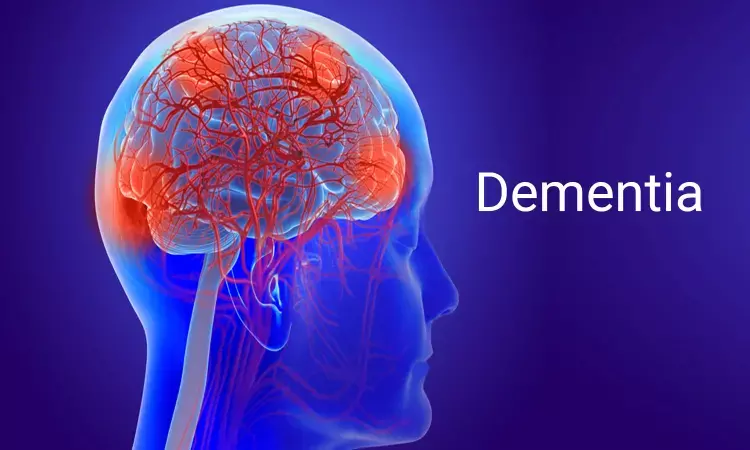- Home
- Medical news & Guidelines
- Anesthesiology
- Cardiology and CTVS
- Critical Care
- Dentistry
- Dermatology
- Diabetes and Endocrinology
- ENT
- Gastroenterology
- Medicine
- Nephrology
- Neurology
- Obstretics-Gynaecology
- Oncology
- Ophthalmology
- Orthopaedics
- Pediatrics-Neonatology
- Psychiatry
- Pulmonology
- Radiology
- Surgery
- Urology
- Laboratory Medicine
- Diet
- Nursing
- Paramedical
- Physiotherapy
- Health news
- Fact Check
- Bone Health Fact Check
- Brain Health Fact Check
- Cancer Related Fact Check
- Child Care Fact Check
- Dental and oral health fact check
- Diabetes and metabolic health fact check
- Diet and Nutrition Fact Check
- Eye and ENT Care Fact Check
- Fitness fact check
- Gut health fact check
- Heart health fact check
- Kidney health fact check
- Medical education fact check
- Men's health fact check
- Respiratory fact check
- Skin and hair care fact check
- Vaccine and Immunization fact check
- Women's health fact check
- AYUSH
- State News
- Andaman and Nicobar Islands
- Andhra Pradesh
- Arunachal Pradesh
- Assam
- Bihar
- Chandigarh
- Chattisgarh
- Dadra and Nagar Haveli
- Daman and Diu
- Delhi
- Goa
- Gujarat
- Haryana
- Himachal Pradesh
- Jammu & Kashmir
- Jharkhand
- Karnataka
- Kerala
- Ladakh
- Lakshadweep
- Madhya Pradesh
- Maharashtra
- Manipur
- Meghalaya
- Mizoram
- Nagaland
- Odisha
- Puducherry
- Punjab
- Rajasthan
- Sikkim
- Tamil Nadu
- Telangana
- Tripura
- Uttar Pradesh
- Uttrakhand
- West Bengal
- Medical Education
- Industry
MRI data may help predict dementia in patients with CSVD

Neuroimaging features of CSVD include recent small subcortical infarcts, lacunes, white matter hyperintensities, perivascular spaces, microbleeds, and brain atrophy.
UK: Cerebral small vessel disease (CSVD) is composed of several diseases affecting the small arteries, arterioles, venules, and capillaries of the brain, and refers to several pathological processes and etiologies. Neuroimaging features of CSVD include recent small subcortical infarcts, lacunes, white matter hyperintensities, perivascular spaces, microbleeds, and brain atrophy. The main clinical manifestations of CSVD include stroke, cognitive decline, dementia, psychiatric disorders, etc.
Researchers discovered a simple small-vessel disease (SVD) score based on MRI data that can help gauge an individual's future risk of dementia, reports being published in the journal Neurology. Three prospective longitudinal cohort studies
1)SCANS [St George's Cognition and Neuroimaging in Stroke], with 121 participants
2)RUN DMC [Radboud University Nijmegen Diffusion Imaging and Magnetic Resonance Imaging Cohort], with 503 participants and
3)the ASPS [Austrian Stroke Prevention Study]), with 1,218 participants, which covered a range of SVD severity from mild and asymptomatic to severe and symptomatic, were included.
In all studies, MRI was performed at baseline, cognitive tests repeated during follow-up, and progression to dementia recorded prospectively. The team developed a simple SVD MRI score, with one point given for the presence of each of any lacunar infarct, WMH and cerebral microbleeds (score range zero to three).
They also modified the simple SVD MRI score to include more information on the severity of MRI features. In this modified score, WMH were graded from zero to three using the Fazekas scale, and the number of lacunar infarcts was graded from zero to three, giving the modified SVD score a range from zero to seven.
Following were the important findings from the study:
• In a pooled analysis of all 3 cohorts, the score improved prediction of dementia (area under the curve [AUC], 0.85; 95% confidence interval [CI], 0.81–0.89) compared with that from clinical risk factors alone (AUC, 0.76; 95% CI, 0.71–0.81).
• Predictive performance was higher in patients with more severe SVD.
• Power calculations showed selecting patients with a higher score reduced sample sizes required for hypothetical clinical trials by 40%–66% depending on the outcome measure used.
"A clinical implication is that the MRI score will be most useful in patients who already have significant SVD, although in view of the association between WMH and Alzheimer disease it would be interesting to formally test its predictive value in this population," stated the authors.
A simple SVD score, easily obtainable from clinical MRI scans and therefore applicable in routine clinical practice, aided prediction of future dementia risk.
For further reading click on the following link,
https://n.neurology.org/content/early/2020/03/01/WNL.0000000000009141
MBBS
Dr K B AARTHI-has completed MBBS from SRM UNIVERSITY TAMIL NADU,Her interest is in the field of Pediatrics and Anaesthesia, also passionate in doing research and publishing articles.She joined Medical Dialogues in 2020 and publishes health news and medical updates. Email: editorial@medicaldialogues.in. Contact no. 011-43720751,9786713226
Dr Kamal Kant Kohli-MBBS, DTCD- a chest specialist with more than 30 years of practice and a flair for writing clinical articles, Dr Kamal Kant Kohli joined Medical Dialogues as a Chief Editor of Medical News. Besides writing articles, as an editor, he proofreads and verifies all the medical content published on Medical Dialogues including those coming from journals, studies,medical conferences,guidelines etc. Email: drkohli@medicaldialogues.in. Contact no. 011-43720751


